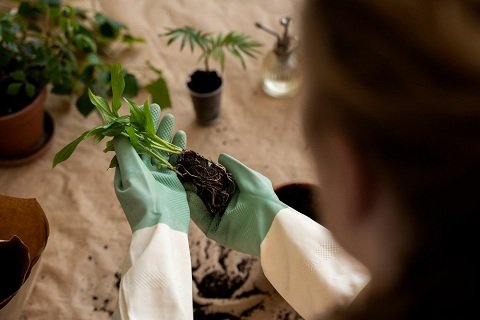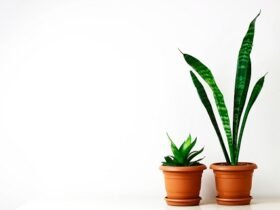Zamioculcas zamiifolia, commonly known as ZZ plants, have gained popularity as indoor plants due to their attractive glossy foliage and ability to thrive in low light conditions. Native to Eastern Africa, ZZ plants are known for their drought tolerance and relatively low maintenance requirements, making them ideal for both beginner and experienced indoor gardeners alike.
Overview of Propagation Methods
Propagation allows you to create new ZZ plants from existing ones, whether to expand your collection, rejuvenate older plants, or share with friends. There are several effective methods for propagating ZZ plants:
- Leaf Cuttings: This method involves taking leaflets from mature ZZ plant leaves and rooting them to grow new plants.
- Division of Rhizomes: ZZ plants grow from rhizomes, underground stems that can be divided to create separate plants.
- Offsets: Occasionally, ZZ plants produce offsets or baby plants that can be separated and planted individually.
Each method has its own advantages and is suitable for different situations, providing flexibility depending on your preference and available resources.
Leaf cuttings are a popular and straightforward method for propagating ZZ plants:
- Selecting a Leaf: Choose a healthy, mature leaf from the ZZ plant. Look for a leaf that is free from damage or disease.
- Preparing the Cutting: Use a clean, sharp knife or scissors to cut the leaf into sections. Each section should have at least one leaflet and a portion of the stem.
- Drying: Allow the cuttings to dry and callous over for a few hours. This helps prevent rotting when planted.
- Planting: Plant the cuttings in a well-draining potting mix. Insert the cut end into the soil, ensuring it is stable and upright.
- Rooting: Place the pot in a warm, bright location with indirect sunlight. Keep the soil lightly moist until roots develop.
- Transplanting: Once roots are established, typically within 4-6 weeks, transplant the new ZZ plants into individual pots.
Leaf cuttings are ideal for beginners and often result in healthy new plants with proper care and attention.
Division of Rhizomes
Dividing ZZ plants through their rhizomes is another effective propagation method:
- Choosing a Plant: Select a mature ZZ plant that has multiple stems or shoots emerging from the soil.
- Removing from Pot: Gently remove the plant from its pot, being careful not to damage the roots or rhizomes.
- Separating Rhizomes: Locate sections of the rhizome that have their own root system and shoots. Use a clean, sharp knife to divide these sections.
- Planting Divisions: Plant each divided section in its own pot with fresh potting mix. Ensure the rhizome is just below the soil surface.
- Caring for New Plants: Water lightly and place in a warm, bright location. New growth should emerge within a few weeks.
Dividing ZZ plants allows you to quickly multiply your plant collection and is particularly useful for rejuvenating older, crowded plants.
Best Time to Propagate
The best time to propagate ZZ plants is during their active growing season, which typically occurs in spring or early summer. During this time, the plant is actively producing new growth and has the energy reserves to support propagation efforts. However, ZZ plants can be propagated successfully throughout the year if provided with appropriate care and conditions.
Caring for New Plants
After propagating ZZ plants, proper care is essential to ensure their establishment and growth:
- Light: Provide bright, indirect light for optimal growth. While ZZ plants can tolerate low light conditions, they thrive with moderate light levels.
- Watering: Allow the soil to dry out between waterings to prevent root rot. ZZ plants are drought-tolerant and prefer slightly dry conditions over soggy soil.
- Temperature and Humidity: Maintain average room temperatures (65-75°F or 18-24°C) and moderate humidity levels. Avoid placing ZZ plants in cold drafts or near heat sources.
- Fertilization: Feed ZZ plants with a balanced, diluted fertilizer once a month during the growing season to support healthy growth. Avoid over-fertilizing, which can lead to fertilizer burn.
- Repotting: Repot ZZ plants every 1-2 years to refresh the soil and provide additional space for growth. Use a well-draining potting mix suitable for houseplants.
By following these care guidelines, your newly propagated ZZ plants will thrive and eventually mature into beautiful, lush specimens, rewarding you with their resilience and beauty.
Frequently Asked Questions (FAQs) About Propagation Techniques for ZZ Plants
ZZ plant leaf cuttings typically root within 4-6 weeks under optimal conditions. Ensure the cuttings are placed in a warm, bright location with indirect sunlight.
ZZ plants can be propagated from leaflets, but success rates are generally higher when using whole leaf cuttings that include a portion of the stem.
Rooting hormone is not necessary for propagating ZZ plants, as they can root readily without it. However, using rooting hormone may expedite the rooting process in some cases.
It is advisable to propagate ZZ plants from healthy specimens free from pests or diseases. Address any pest or disease issues before attempting propagation to ensure the success of new plants.
Conclusion
Propagation of ZZ plants offers a rewarding opportunity to expand your indoor garden while preserving the unique characteristics of these resilient plants. Whether you choose leaf cuttings, division of rhizomes, or offsets, understanding the process and providing proper care will ensure successful propagation and healthy growth of your ZZ plants. Enjoy the journey of nurturing new life and enhancing your living space with these versatile and visually appealing houseplants.















